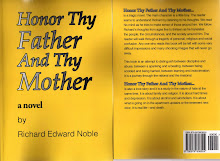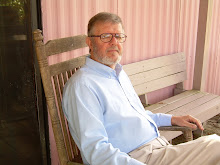
1981 Traffic Controllers Strike
Striking America
By Richard E. Noble
Dear Mr. Poli:
I have been briefed by members of my staff as to the deplorable state of our nation’s air traffic control system. They have told me that too few people working unreasonable hours with obsolete equipment has placed the nation’s air travelers in unwarranted danger. In an area so clearly related to public safety the Carter administration has failed to act responsibly.
You can rest assured that if I am elected President, I will take whatever steps are necessary to provide our air traffic controllers with the most modern equipment available and to adjust staff levels and work days so that they are commensurate with achieving a maximum degree of public safety...
I pledge to you that my administration will work very closely with you to bring about a spirit of cooperation between the President and the air traffic controllers.
Sincerely,
Ronald Reagan
The above was a letter to, Robert Poli, the head of the traffic controller’s union (PATCO) on October 20, 1980.
On August 3, 1981 after being elected president with the support of PATCO, the Teamsters and the Air Line Pilots Association, the new president ordered the traffic controllers back to work. He gave the union members 48 hours to make up their minds to return to work or lose their jobs. Reagan said that their walking off their jobs on August 3, 1981 constituted “a peril to national safety.”
Reagan warns the union that their strike is illegal and violates a 1955(56) law that prohibits government workers from striking. A federal judge then finds PATCO President Robert Poli in contempt of court and fines the union $1000 a day for each day its members remain on strike.
The strikers do not conform to the President’s demand and ignore the court’s threats. On august 5, 1981 Reagan fires the majority of the union members and bans them from ever being rehired.
On the surface this strike seems typical - higher wages, better working conditions and benefits, and respect for workers. But this strike is far from typical. After reading a number of analyses it becomes rather obvious that something strange is going on.
In 1968 PATCO was founded with the assistance of the famous lawyer F. Lee Bailey. F. Lee bailey was also a pilot in the military.
In 1969 the union staged a “sickout.” The federal courts intervened but yet the FAA was brought to the bargaining table and concessions were made to the union. But even so the underlining causes of the discontent lingered on. In the intervening years complaint after complaint was registered by the controllers - but nothing changed.
Two surveys (The Rose Report and The Jones Report) and a number of studies were conducted to try to determine the exact nature of the controller’s complaints.
The controllers complained of being overworked, over-stressed, under staffed, poor training of incoming controllers, harassed and harried by supervisors, under equipped, and a loss of personal and family time. In 1968, 1969, 1970, 1974, 1975, 1978 the traffic controllers engaged in nationwide slowdowns and more sickouts. Surveyors and investigators found most of the claims to be true and made recommendations accordingly. The FAA managers ignored the advice and nothing changed.
The controllers’ claims of undue stress were investigated. It was found that though their jobs were considered no more stressful than many others, the controllers were exhibiting stress related symptoms - excessive drinking, family problems, physical and mental breakdowns. Something was wrong and it seemed to be with the FAA management style and personnel. Many of the management team were ex-military. They were authoritarian, demanding, overbearing, unsympathetic, controlling and manipulative.
Finally, on August 3, 1981, 13,000 air traffic controllers walked off the job. The majority of the strikers were fired and never rehired.
In June of 1981 the controllers were offered a $2,500 increase in addition to $1,400 overall government increase along with a few other minor adaptations. Ninety-five percent of the union members rejected the offer.
Reagan summarily fired over 11,350 skilled workers in one day. He was able to do this because the government had been secretly preparing for this circumstance. The secret FAA plan was immediately implemented. A flow control system was incorporated. It regulated and distributed an even number of daily flights. Supervisors, military personnel and secretly trained staff were brought into the workplace. With 7000 fewer controllers than before the strike the government was able to maintain over 80% of scheduled flights.
The new workers were temporarily happy but by 1983 they were once again organizing a union. Now the “scabs” were organizing. It seems that none of the original problems had disappeared. By 1987 the scabs and union busters had formed the National Air Traffic Controllers Association. Their complaints seemed to mirror PATCO’s. Investigators were surprised and shocked.
In 2006 the ground started rumbling once again. NATCO and the FAA were at odds over their contract.
Ronald Reagan, patenting himself after his personal “hero” Calvin Coolidge re-orchestrated the infamous Boston Police Strike and much to the same result. Like Calvin Coolidge before him, Mr. Reagan became a hero in the eyes of the American public. His action was hailed by the press and cheered by the populous. Thirteen thousand skilled trained workers were declared to be lying and without legitimate reason for complaint. Eleven thousand three hundred and fifty were fired on the spot in response to a law that seems clearly unconstitutional. If you can deny any group of workers the right to strike, why not all workers? The right to strike as with the right to protest or the right to revolt is not something that a government grants. It is the natural right of the people. If the government chooses to challenge the people, it can do so. It has the power.
It is really difficult to understand fully what went on here. Clearly a political event took place. The problem was obviously not solved. It continues to the day of this writing. But as can be seen from reading all the entries in this volume, respect for the American worker is not and has never been a national priority.





































